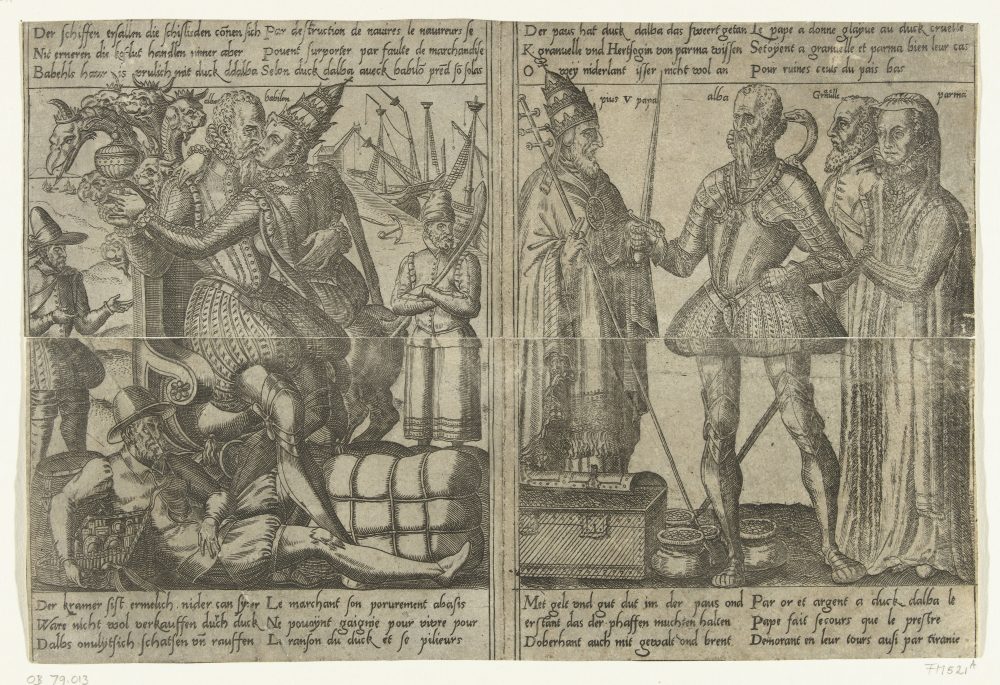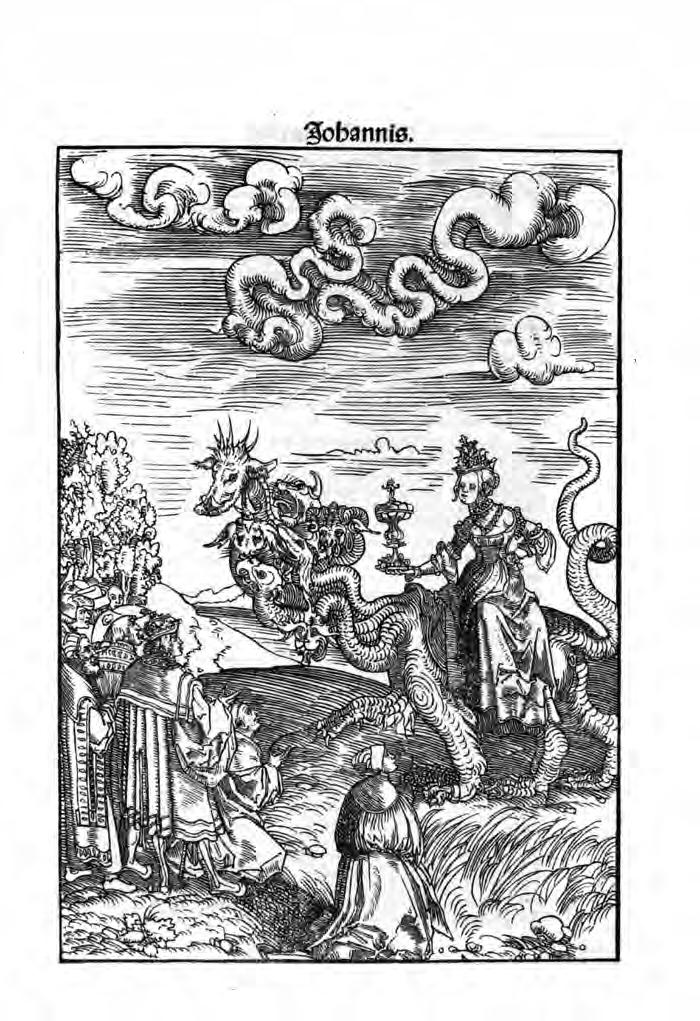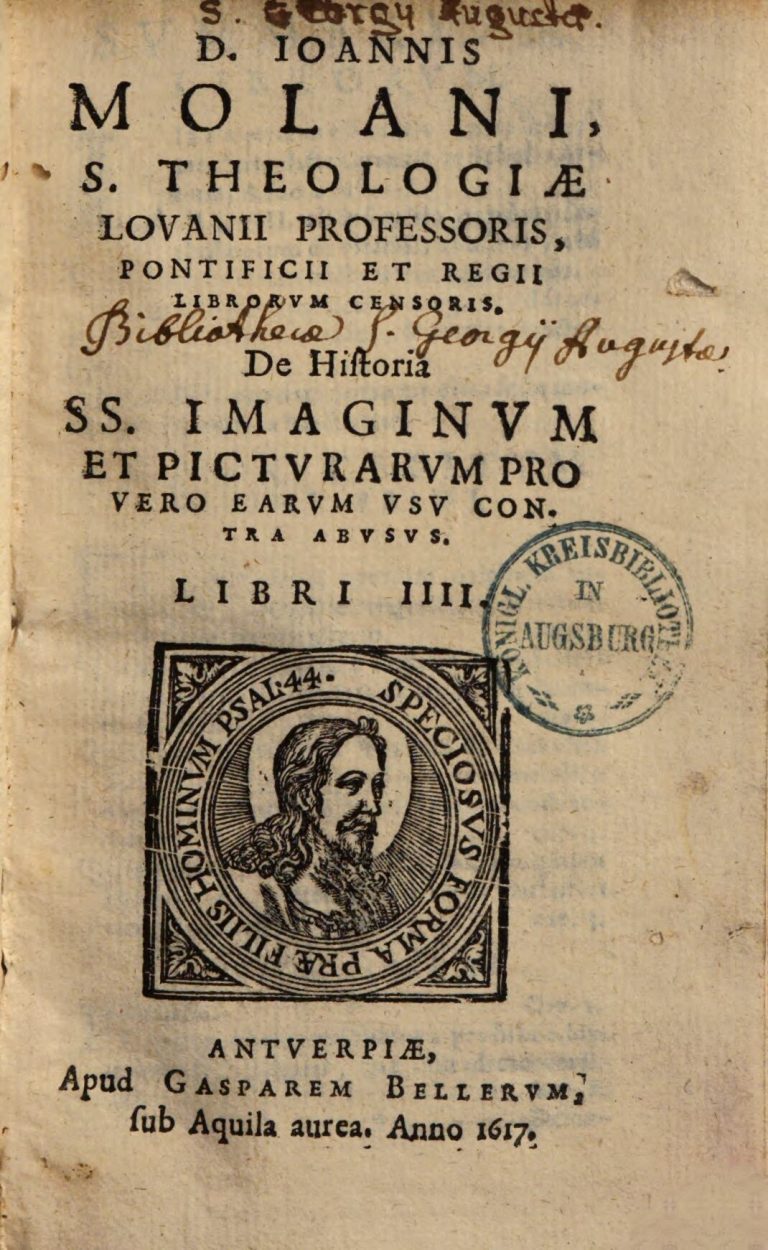
Rijksmuseum, Amsterdam, http://hdl.handle.net/10934/RM0001.COLLECT.444755
After a short intermezzo in book 2, chapter 24, on how priests should deal with wrong images in their churches, Molanus continues his argument on dangerous images for the uneducated. He first reaffirms his previous statements on the prohibition images that are dangerous and/or promote a false doctrine and the need for their removal. An interesting aspect of his reasoning here is the somewhat contradictory comment that in the Catholic Church none of such images can be found because they have already been banned by the Council of Trent. This then gives room to attack the Protestants and other heretics since, according to Molanus, it is among them that one can find images that are sources for errors, for example, those images combining only two or three sacraments or attacking Catholics. He then mentions a few examples of such heretical iconographies deriving from the heretics: monks entering the sheepfold without going through the gate; the depiction of the Pope as the Antichrist or the Whore of Babylon; and the depiction of God as an ass. He concludes that even if such an image managed to get through the tight inspection of the Church, it should still be abolished.
“And to better precise my proposal, I think that any of the images about which we have spoken can give the occasion of a dangerous error among simple people. I think above all that any person of the people without instruction has taken in those images an error against faith or the mores. I, therefore, insist on my idea, that there are no such images in the Church; the proof of this is that the Council of Trent, where it speaks of the exhibition of such images, made no mention of their existence. No image should be exhibited which carries a false doctrine and which gives uneducated people the opportunity of a dangerous error. Whereas it would have been easy to add: and those that are exhibited must be abolished. And, I affirm, therefore, that there is no image in the Church which is a source of dangerous error since the images which are sources of error are to be found among the heretics, such as those which bring together only two or three sacraments, and those which are blasphemous for Catholics, such as those in which they depict the monks entering the sheepfold without passing through the door, and those in which they portray the Roman pontiff, the head of the Christian world, as the Whore of Babylon, or as the Antichrist. The pagans also dared to paint our God with the ears of an ass, hoofed on the other foot, carrying a book and wearing a robe, with the signature: God of the Ononychite Christians, as Tertullian reports. But this is outside the Church. In the meantime, if any image of a dangerous error were to be found anywhere in the Church, the following would pertain to it: ‘If any abuses have crept into these holy salutary observations, the holy Synod strongly desires to abolish them altogether.'”
“Atque ut ad rem propius veniam, arbitror nullam praedictarum imaginum rudibus periculosi erroris occasionem praebere. Imo ne unum quidem ex rudi populo ex praedictis imaginibus occafionem erroris in fide aut moribus accepisse. Et, ut quam maxime accepisset, nondum consequeretur imaginem, eam praebuisse, sed errorem eum salutari doctrina castigandum esse. Ceterum particulatim motas exemplorum difficultates in sequentibus libris convenientiori, ut arbitror ordine dilucidabimus. Atque ex iis animadverti poterit, quam aliena sit Ecclesia a periculosi erroris imaginibus. Hoc igitur inculco, quod putem nullam imaginem periculosi erroris in Ecclesia haberi: atque ob id Concilium Tridentinum nullam mentionem de imaginibus quae iam habentur, fecisse, ubi de statuendis dicit: Ita ut nullae falsi dogmatis imagines et rudibus periculosi erroris occasionem praebentes, statuantur. Alioqui facile adiecisset, Qae autem statutae sunt, aboleantur.
Dico autem, in Ecclesia nullam haberi periculosi erroris imaginem, quia apud Haereticos notum est multas haberi imagines haereticas, ut eas, quae duo aut tria tantum complectuntur sacramenta, blasphemas etiam in Catholicos, ut ubi Monachos pingunt intrantes in ovile, non per ostium, et ubi, Romanum Pontificem, orbis Christiani caput, picturis faciunt aut meretricem Babylonicam, aut Antichristum. Pagani etiam ausi fuerunt Deum nostrum pingere auribus asininis, altero pede ungulatum, librum gestantem et togatum, cum subscriptione: Deus Christianorum ononychitis, ut refert Tertullianus. Sed haec extra Ecclesiam. Interim si quae periculosi erroris imago in Ecclesia alicubi haberetur , ad eam pertineret quod praecedit : In has sanctas salutares observationes, si qui abusus irrepserint, eos prorsus aboleri sancta Synodus vehementer cupit.”


Molanus 1996, 192-193. Robert W. Scribner, For the sake of the simple folk. Popular Propaganda for the German Reformation, Camebrigde: Camebridge University Press, 1981.



